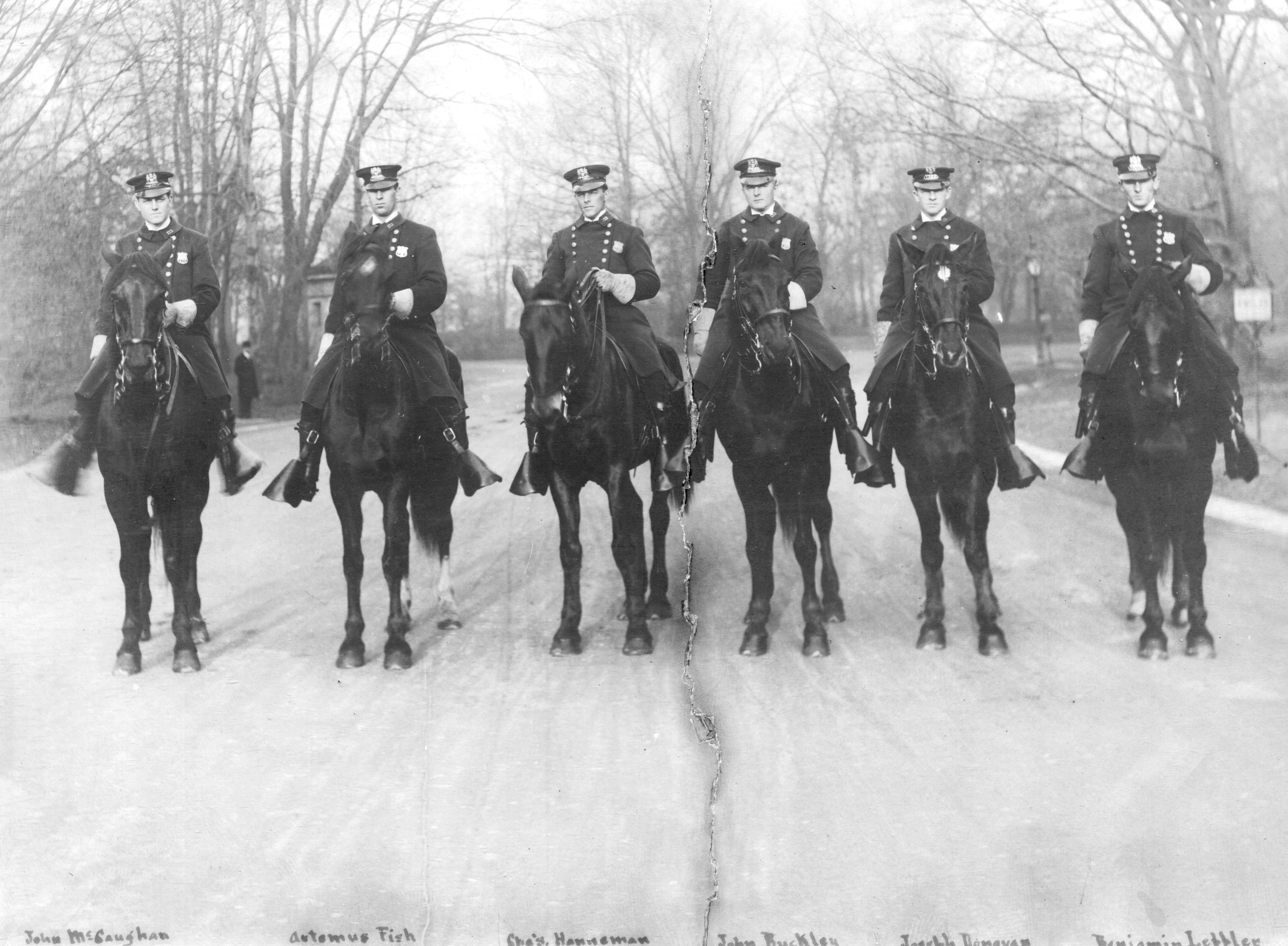
In previous posts I shared stories about Harry, the blue-ribbon police horse of Prospect Park, Brooklyn, and Bulb, the bad-luck police horse of the Flatlands section of Brooklyn. Today I want to tell you about Artemas Fish, who, like Patrolman Henry Hilton and Harry the horse, was attached to the Prospect Park Police.
Before I do, though, I want to give a shout out to author and local historian Brian Merlis of BrooklynPix.com, who has an amazing collection of historical photos and books. Brian sent me the photo above, which led to extensive research that not only revealed the story of Artemas Fish (and the names of the other patrolman in the photo), but also led me to my great-grandfather, Joseph Probst, a mounted patrolman in Richmond Hill, Queens (pictured below).
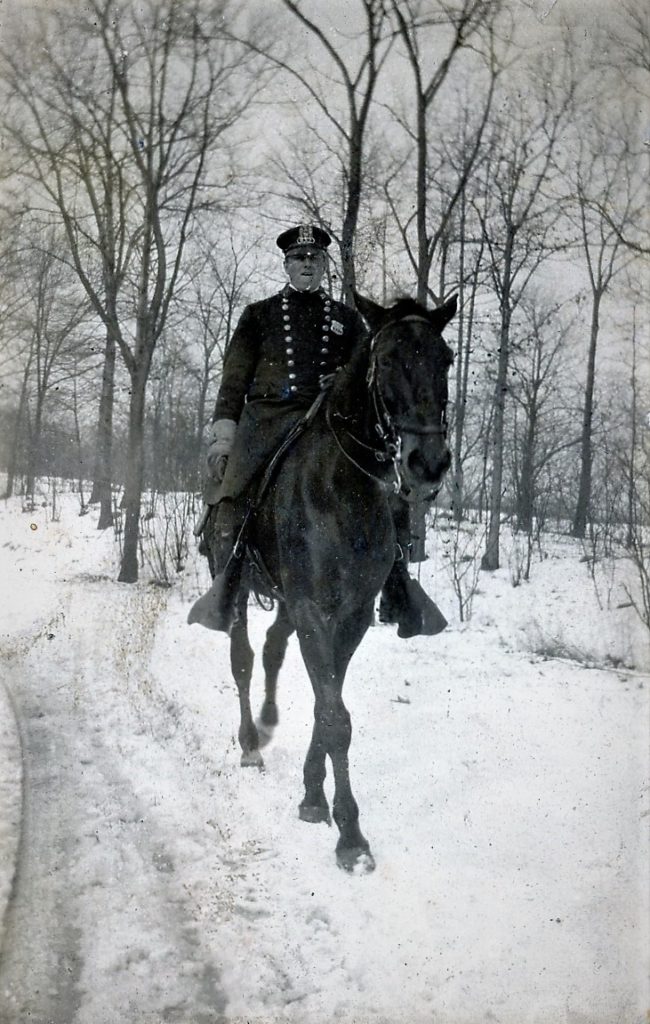
From Country Farm Boy to Big-City Policeman
Artemas L. Fish was born in Sidney, New York, in July 1875. Sidney is a rural town in the foothills of the Catskill Mountains in Delaware County, about 45 miles northeast of Binghamton. In the late 1800s and early 1900s, the farming and milling community was well-known for the New York Ontario & Western (NYO&W) Railway trestles that formed a giant horseshoe curve around the hamlet of Sidney Center.

According to census reports, Artemas Fish spent the first years of his life in the Village of Franklin. When he was about 13 years old, his parents, Martin and Ellen, purchased a 130-acre farm in Sidney, about ¼ mile from the O&W railroad station at Franklin Depot. Martin planted grains and potatoes on the land.
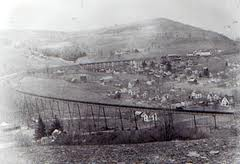
Artemas Fish and his sisters, Jennie and Mabel, attended school at the three-room Liberty Street School (later called the Sidney Union School), and perhaps graduated high school from the Pleasant Street School, which was erected in 1892. Artemas may have also attended night school: In 1890, the first evening class for adults in Sidney was a class in telegraphy.
In 1900, at the age of 24, Artemas Fish was still living in the family’s 12-room farmhouse with his parents, his sister Jennie, and a servant, Arthur Whitney. Artemas worked as a telegraph operator and was a member of the Franklin Lodge No. 562 of Free and Accepted Masons. His sister worked as a dress maker.
Sometime between 1900 and 1906, Artemas headed south to the big city to join the New York Police Department. By the summer of 1906, he was working as a patrolman for the old 8th Precinct at 19 Leonard Street. It was there that he was assaulted while guarding a wholesale grocery store on Duane Street.

The Assault on Duane Street
In December 1905, the union drivers for Clark, Chapin & Bushnell at 177-179 Duane Street went on strike. For many months thereafter, the replacement drivers were harassed by members of the Local 105 of the International Teamsters’ Association in a series of attacks. Several of the non-union drivers were severely beaten in these attacks, and had to be taken to the nearby Hudson Hospital for emergency care.
On July 22, 1906, a bomb was placed in front of the grocers’ building. The bomb went off with a bang a midnight, shattering the windows of the wholesale grocer and of neighboring buildings. To discourage further attacks, Acting Captain George C. Liebers of the 8th Precinct assigned some of his patrolmen to work as plain-clothed guards at the building during evening hours. Artemas Fish was working this detail on Monday night, August 6, when he was attacked.
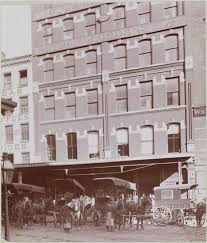
According to the news report (The Sun, August 8, 1906), Artemas was standing in front of the building when he was approached by John Malone, 24, of 116 E. 12th Street, and Morris McAleer, 23, of 640 Summit Avenue, Jersey City. After he identified himself as a police officer and told the men to “beat it,” the men said they would beat him instead with the spikes that they pulled from their trouser pockets.
When patrolmen Frederick W. Goodnow and George W. Hoffman arrived in response to his calls for help, Artemas was on the ground and bleeding. He was taken to the Hudson Street Hospital, where he was treated for scalp wounds and other injuries.
Although Malone and McAleer tried to run, they were apprehended by police. Both men appeared before Magistrate Matthew P. Breen in the Tombs Police Court and were remanded to prison on $1,000 bond each.
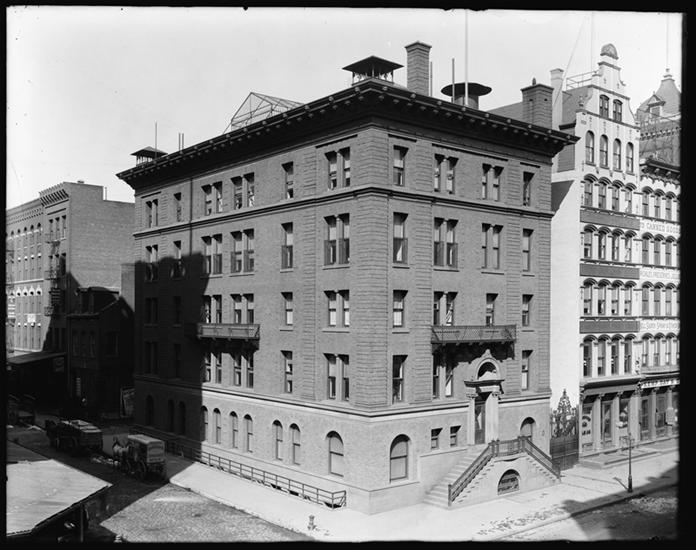
The Final Ride on Ocean Avenue
On June 2, 1908, Artemas returned home to marry his high school sweetheart, Nellie Ophelia Ramsdell, the 28-year-old daughter of James and Emily Ramsdell of Masonville, New York. Poor Nellie would never get the chance to celebrate her first anniversary with Artemas in their new home at 620 East Fourth Street in Flatbush.
By the time of his marriage, Artemas Fish was working as a mounted patrolman for the more rural Prospect Park Police Precinct in Brooklyn. I imagine patrolling the park and chasing after runaway horses was much more suitable work for Artemas than dealing with the more menacing crimes in Manhattan. But unfortunately, mounted patrol work also had elements of danger.
One day during the first week of April 1909, Artemas was on patrol on Ocean Avenue when his horse shied at something in the road and threw him violently to the ground. The horse stumbled and fell on top of him, causing internal injuries.
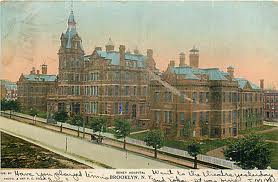
Artemas was taken to the Seney Hospital on Seventh Avenue, but he contracted lockjaw (tetanus) and never recovered. In the first week of May his parents were summoned to the hospital to say goodbye to their dying son. He died on May 9 and was buried with Masonic honors at the Highland Cemetery following funeral services at the Methodist Episcopal Church in Sidney Center.
Following her husband’s death, Nellie Fish returned to Sidney. On January 2, 1926, she married Robert S. Peck.
Ten years after his son’s death, Martin Fish put the farm, the farmhouse, and barns on the market for $4,000. He passed away in 1931.
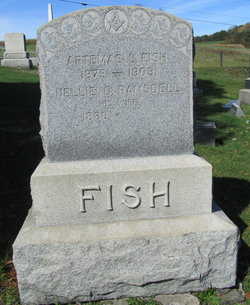




[…] 1909: The Prospect Park Horse that Decided the Mortal Fate of Patrolman Fish […]
hi what happend to the PT 2 segment of NYPD mounted heroes? You were going to mention William Galbraith…I was curious because i am related to him..Thnks